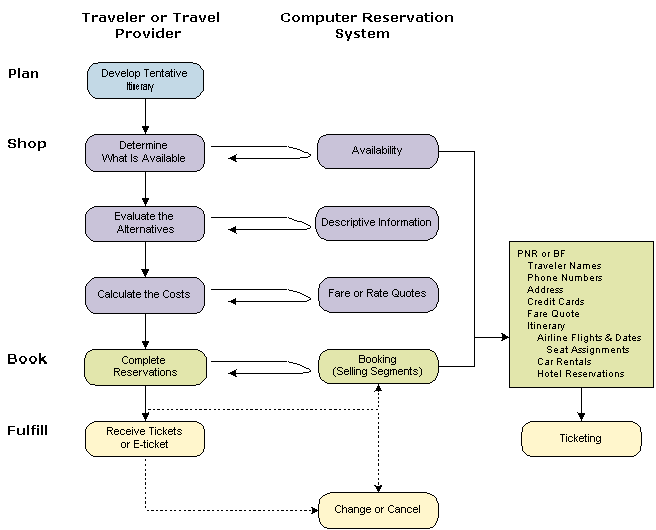High-Level Travel Processes
XML transactions currently supports travel arrangements for flights, rental cars, hotels, and cruises. The standard business process for travel involves three (3) basic steps for the traveler or travel provider:
-
Planning
-
Shopping
-
Booking
In addition to these basic steps, the travel provider must include any fulfillment processes such as ticketing or other activities associated with purchasing inventory or services. If the traveler chooses to modify or cancel any segments in their itinerary after booking or fulfillment, all or part of their itinerary must be modified or canceled. Changing or canceling an itinerary are variations of the standard process.
Another variant of the standard process is the implementation of sessioned or sessionless transactions. The type of transactions used can impact the security model of the client applications. Specific CRS functions, such as signing on to sessions, can provide security, as well as customer identification. Security functions are not part of a linear travel processes and are typically implemented as part of the shopping, booking, and fulfillment processes.
The planning and shopping phases often (but not always) involve an iterative process of comparing, contrasting, and eliminating various possibilities. The type of traveler (business or leisure) and their preferences often drives the business process for creating specific travel arrangements. Support for traveler preferences and business processes can also drive the design and development of travel applications.
The following diagram illustrates the basic functions in the process. It is important to note that not all travelers or travel providers go through each step in this process. Rather, this diagram provides an overview of the basic steps that may be involved in a specific travel inquiry or itinerary.

Some travelers require only parts of a given process, and travel applications can be specifically designed to accommodate this variation. For example:
-
A business traveler may return to a preferred site to book reservations for a trip they make monthly. This business traveler does not need to spend time in the planning or shopping stages because the traveler requires specific reservations.
-
A corporate travel application can be designed to allow users to plan and shop for travel, but not permit them the capacity to book reservations. The user could view various possibilities, However, they might go to an affiliated travel agency to complete actual booking and fulfillment.